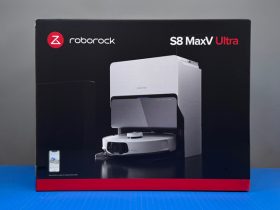Whilst LG are just one of a few companies now offering basic HomeKit and AirPlay integration for their higher-end TVs, the South Korean company have tried to take things a step further, with a ‘mobile’ display that can not only be used as a TV but features many more functions. The embarrassingly corny product- dubbed the ‘LG StanbyME’ was revealed and reported on back in December of 2021, although at that time there was no mention of HomeKit or AirPlay functionality.
There’s a projected release for May of this year, although it’s already available in a few territories, like Hong Kong for example. Now with the product in the hands of a few reviewers in Asia, we’re getting more of an idea of what it’s capable of.
There are many things that set this product apart from a regular TV, one of which is that the screen can be swivelled to display content in either portrait or landscape mode. The TV comes on a stand that makes it rather portable compared to a regular TV that hangs on your wall, and because it has built-in batteries that can last up to 3 hours, you don’t even need to have it connected to mains until the batteries need recharging.
The included stand also allows the display to be angled so that it can be facing upwards (if you’re on a treadmill for example), or face downwards if you’re relaxing on your couch. The screen’s vertical position can also be adjusted to an extent. The stand also comes with five castors to make moving the whole thing easier to move around.
Whilst it’s capable of screen mirroring with the aid of AirPlay 2, it can also perform screen mirroring from certain mobile phones with the use of NFC pairing. However, you can still stream audio and video in far more traditional ways, via the built-in USB and HDMI ports on the back of the screen. Even though it can perform as a standard TV, it also has a variety of apps using LG’s WebOS, so watching YouTube, Netflix, Disney+ etc, for example, are made quite easy compared to trying to view these via a browser on the display.
What may or may not appeal to some is that the display is only 1080p, not 4K, even though it is OLED, along with a 27′ screen. Given that it would be quite close to a user compared to a standard TV, this may not be such a big deal, but given the price at over US$1000 (converted from the Taiwan NT$ list price), one might rightly expect 4K nonetheless.




